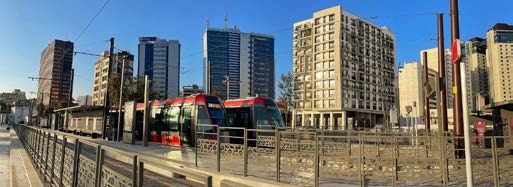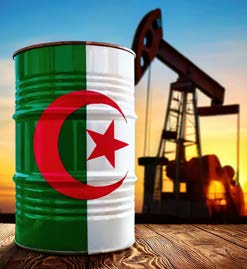- Perspective – August 2025
- NDE Advert
- GPS Round Up
- Sassda News : Sixty Minutes with Stainless Webinar: Full Report
- Sassda News : Tariffs with a Purpose
- EMV Africa Advert
- State of the Stainless Steel Nation
- Focus Feature
- Professional Profile – Craig Bateman
- Technical Case Study – Stainless Steel in Hydrometallurgy
- Member News – Astra Industrial Innovations
- Member News – African Sinks
- Market Intelligence – North Africa Rising
- Sassda News
- Member News
Morocco and Algeria Drive Stainless Steel Demand with Major Projects

As stainless steel businesses look to expand into high-growth regions, Morocco and Algeria stand out for their accelerating investment in infrastructure, energy, and industrial development. This strategic review highlights key sectors and flagship projects in both countries, offering Sassda members practical insights into emerging export opportunities and areas of growing demand for stainless steel products.
MOROCCO:
Strategic Ambition Meets Sustainable Innovation
Morocco, positioned at the crossroads of Europe, Africa and the Middle East, is a country of growing geopolitical and commercial significance. With coastlines along both the Atlantic Ocean and Mediterranean Sea, and sharing borders with Algeria and Western Sahara, Morocco has long been a
vital trade and energy corridor.
The Kingdom of Morocco is governed as a constitutional monarchy, where the King retains considerable influence, particularly in foreign policy, defence, and religious affairs. Home to an estimated 37-million people, the official languages are Arabic and Tamazight (Berber); though French, Moroccan Arabic, and Spanish are widely spoken in business and trade.
Morocco’s economy, with a nominal GDP of $165.8-Billion, is driven by several key sectors:
- Agriculture: Major exports include citrus, olives, and cereals.
- Mining: Morocco holds around 75% of the world’s phosphate reserves.
- Tourism: Cultural and eco-tourism destinations such as Marrakech, Fès, and the Sahara continue to draw global visitors.
- Renewables: Ambitious targets are fuelling growth in solar, wind, and hydrogen energy.
Flagship Projects in Morocco
1. Noor Midelt Hybrid Solar Park
Set to become one of the world’s largest solar installations, this 800 MW hybrid facility combining 200 MW concentrated solar power with 600 MW photovoltaic includes energy storage capabilities to stabilise the national grid. Completion is expected by December 2025 and will support Morocco’s target of sourcing 52% of electricity from renewables by 2030.
2. Mohammed V International Airport Expansion
A $1.6-Billion expansion of Morocco’s busiest airport aims to double capacity to 30-million passengers annually by 2029. Managed by the Office National des Aéroports (ONDA), this project aligns with the country’s preparation for co-hosting the 2030 FIFA World Cup alongside Spain and Portugal.
3. Nador West Med LNG Terminal
Morocco is constructing a new $700-Million LNG terminal at Nador West Med Port. This project includes a pipeline network linking the terminal to existing infrastructure with Spain, positioning Morocco as an emerging gas logistics hub for Europe.
4. Sidi Slimane Grand Stadium
At a cost of $320 million, this 115 000-seat stadium near Casablanca will be the largest in Africa. Built on a 100-hectare site, the facility strengthens Morocco’s sports infrastructure ahead of the 2030 World Cup.
5. Guercif–Nador Highway
A 104-kilometre highway, partly funded by the African Development Bank, is part of a broader strategy to upgrade 1 000+ kilometres of road infrastructure. The $700-Million project boosts regional connectivity and trade capacity.
6. “Morocco Offer”
Ammonia and Green Hydrogen Projects Backed by $30-Billion in commitments, six large-scale hydrogen and ammonia projects have been approved under the “Morocco Offer”. This includes partnerships with global players such as Acciona, Nordex, TAQA, Moeve (formerly Cepsa), Naerva, and two
Chinese firms. The initiative offers land, infrastructure, and regulatory incentives, reinforcing Morocco’s ambitions to be a renewable energy powerhouse.
ALGERIA:
 An Energy Giant with Eyes on Diversification
An Energy Giant with Eyes on Diversification
Algeria, Africa’s largest country by landmass, holds immense strategic and economic weight in the Maghreb region. With a population of 47.8- million, its economy is centred around hydrocarbons. The official languages are Arabic and Tamazight, though French remains prevalent in business and education.
With a nominal GDP of approximately $268.9 billion, Algeria’s economic landscape is shaped by:
- Hydrocarbons: Oil and gas account for over 90% of export earnings.
- Mining: Rich reserves of phosphates, iron ore and zinc.
- Agriculture: Staple crops include wheat, dates, and olives.
- Manufacturing: Cement, steel, and food processing industries show steady growth.
Key challenges include overdependence on hydrocarbons, high youth unemployment, and the urgency to diversify revenue streams.
Major Projects Driving Algerian Infrastructure
1.Tafouk 1 Mega Solar Project - This $3.6 billion renewable energy initiative aims to deliver 4 GW across five phases by 2025, up from 500 MW in 2020. It forms the cornerstone of Algeria’s clean energy transition and emissions reduction strategy.
2. Southwest Gas Fields Development - National oil company Sonatrach, in collaboration with L&T Hydrocarbon Engineering, is developing new gas processing infrastructure in Adrar. The project enhances capacity to 14 million m³/day with state-of-the-art separation, compression, and mercury removal systems.
3. Northern Rail Network Expansion - A 185-kilometre corridor linking Tissemsilt, Tiaret, and Relizane will improve logistics and regional transport. This is part of broader efforts to modernise Algeria’s national rail network.
4. Bled El-Hadba Phosphate Project - Backed by $7-Billion, this mining venture taps into 22 billion tonnes of reserves and is expected to generate over 12 000 jobs during construction. It underlines Algeria’s strategy to expand beyond oil and gas.
5. Enhanced Desalination Programme (2025–2030) - To combat water scarcity, Algeria is rolling out seven new desalination plants. This will increase the percentage of desalinated water in national drinking supplies, from 18% to 42%, with all engineering led by Algerian firms.
6. SoutH2 Corridor – Green Hydrogen Pipeline to Europe - Algeria is positioning itself as a key hydrogen supplier to Europe. The planned 3,300 km SoutH2 pipeline—linking North Africa with Italy, Germany, and Austria—will have the capacity to export 4 million tonnes annually. Feasibility studies are underway in partnership with EU stakeholders
Conclusion
Morocco and Algeria are recalibrating their industrial and infrastructure trajectories. While Morocco is leveraging its renewable energy momentum and strategic location to attract global investment, Algeria is taking concrete steps to reduce dependency on hydrocarbons and embrace economic diversification. Both countries present a growing pipeline of opportunities across energy, infrastructure, and logistics, making them increasingly relevant to global supply chains and strategic investors.

